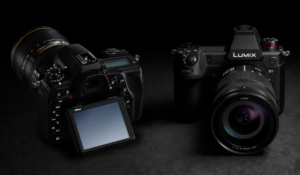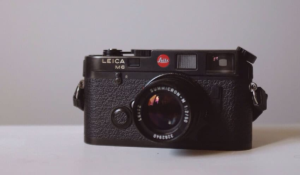What is Crop Factor? Here is What You Need to Know

The term crop factor is often used in digital photography. This is especially true amongst enthusiasts and professionals. This concept is deeply entwined in understanding how different lenses interact with camera sensors, and how this affects the composition and field-of-view of your photos. Let’s explore the basics of crop factor, and its implications for photography.
Origin of Film Photography

The transition from analog to digital sensors is the root of crop factor. In the film era 35mm film was used as the standard format for photography. When digital cameras were introduced, compatibility was a must. The concept of crop factor emerged to create a baseline for focal lengths.
Definition of crop factor:
Crop factor is a ratio between the diagonal of the camera sensor and that of a 35mm film (or full-frame sensor). It measures how much smaller the field of vision is for a camera that has a smaller sensor than a full frame sensor. It essentially indicates the amount of “cropping”, which occurs because of the sensor size differences.
Field of View Impact:
The field of view is the essence of crop factor. The smaller sensors “crop” off or cut out parts of the projected image, which results in a narrower view than full-frame sensors. The change in field of vision has a significant impact on image composition and framing.
Calculation of crop factor:

Calculating crop factor is a simple mathematical process. Photographers can calculate the crop factor by dividing the diagonals of full-frame sensors by the diagonals of smaller sensors. This calculation gives an idea of the focal length equivalent for a lens when used on different sensor sizes.
Equivalent Focal length:
Understanding crop factor allows photographers to calculate the equivalent focal length for a lens when using different sensor sizes. A 24mm lens mounted on a camera that has a crop factor of 1.5x behaves the same as a 36mm full-frame lens. This equivalence helps predict the field of vision and framing for images.
Common crop factors:

Crop factors vary between different camera systems, and can range from 1.5x up to 2.7x. Lenses are designed specifically for crop sensor cameras, such as DX, E, and EF-S lenses, to ensure compatibility.
Lens Compatibility & Sensor Size
The crop factor highlights the importance of choosing lenses compatible with your camera’s sensor. Some lenses designed for crop-sensor cameras are not suitable for full frame bodies, and vice versa. Understanding the differences is crucial to achieving desired results.
Practical Use and Conclusion
It’s important for photographers to master the crop factor, but it is also crucial that they prioritize their creativity and photographic abilities. Modern cameras offer incredible potential to capture stunning images, regardless of the sensor size. Understanding crop factor allows photographers to make more informed decisions about lens selection, image composition, and creation.
Crop factor is a fundamental element in digital photography. It allows photographers to optimize their creative vision and navigate differences in sensor sizes.



